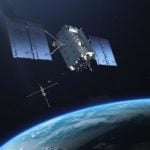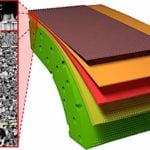The Indian Space Research Organisation (ISRO) is the premier space agency of India. It has been actively involved in space research and exploration for several decades.
ISRO has been developing a reusable launch vehicle (RLV) for several years as a part of its space exploration efforts. We’re here to talk all about it and the opportunities it presents in the future of the aerospace industry – keep reading. (ISRO official website>>) [3]
[See the video of the landing embedded below.]
The RLV Project: Goals and Objectives
The RLV project is aimed at developing a reusable launch vehicle that’s:
- Cost-effective
- Environmentally friendly
- Capable of launching payloads into low Earth orbit (LEO)
The RLV project is expected to considerably diminish the cost of space launches and make India a more competitive player in the global aerospace industry. The project includes the development of a reusable space vehicle and a reusable launchpad.
The RLV will be capable of launching payloads into LEO and returning to Earth for reuse. The launchpad will be used to launch the RLV and will also be reusable, significantly reducing the cost of space launches.
Video highlights of the successful RLV Project from Nimbus Education (credit for images to ISRO):
ISRO’s Recent Test of an Autonomous Lander
ISRO recently conducted a successful test of an autonomous lander using a helicopter. The test was a momentous milestone in the RLV project as it demonstrated how the RLV could launch payloads using a unique launch mechanism.
The autonomous lander was designed to simulate a Mars landing. The helicopter used in the test was a Mi-17: a multi-role helicopter used by the Indian Air Force. The helicopter was used to launch it from a height of 3 km.
The autonomous lander was equipped with a set of sensors and instruments that allowed it to navigate and land on its own. The lander successfully landed on a pre-determined landing site, proving the accuracy and precision of the autonomous navigation system.

Cost-Effective and Environmentally Sustainable Launches
The primary goal of the RLV project is to create a reusable launch vehicle that can be used for multiple launches, significantly lessening the cost of space launches.
Traditional space launch vehicles aren’t reusable and are often discarded after a single use. This leads to a significant amount of space debris, which poses a threat to other space vehicles and satellites in orbit.
By developing a reusable launch vehicle, ISRO aims to reduce the cost of space launches and make them more sustainable and environmentally friendly.
With the ability to launch payloads multiple times, the RLV can significantly reduce the cost of space launches. This helps make space exploration more accessible to a broader range of organizations.
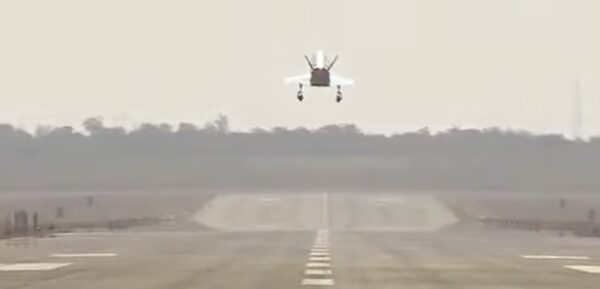
Advancements in Robotics and Artificial Intelligence
One of the most exciting parts of the recent landing experiment was the autonomous navigation system used by the autonomous lander.
The lander was equipped with sensors and instruments that allowed it to navigate and land on its own. This shows significant advancements in robotics and artificial intelligence, which can have far-reaching implications for space exploration.
The ability to travel autonomously and make decisions based on data gathered in real-time can be invaluable in space exploration, where human intervention is often limited due to the vast distances involved.
The success of the autonomous navigation system used in the landing experiment shows that ISRO is at the forefront of robotics and AI in space exploration.
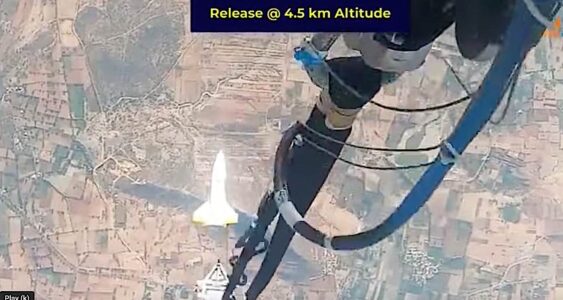
Competition with Other Countries
ISRO’s RLV project is a significant contribution to the global aerospace industry. With the development of a reusable launch vehicle, ISRO aims to make space exploration more accessible and cost-effective, not just for India but for other countries too.
The success of the RLV project can help India compete with other countries in the global aerospace industry. Countries like the United States, China, and Russia have traditionally been the leading players in the aerospace industry.
However, with the development of the RLV project, ISRO is positioning itself as an important contender in the industry. This can help India to develop and export technology and expertise related to space exploration.
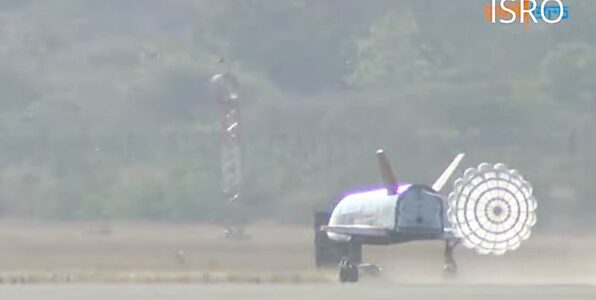
ISRO’s Collaboration with Other Countries
ISRO’s RLV project also has the potential to create significant opportunities for collaboration and partnership with other countries in the aerospace industry.
The recent landing experiment involving a helicopter to launch the autonomous lander is a prime example of the potential for collaboration and partnership.
India has already collaborated with other countries in the aerospace industry, including France and the United States. With the success of the RLV project, ISRO can further expand its collaboration and partnership with other countries. This helps to create a more integrated and collaborative global aerospace industry.
Opportunities for Commercial Space Exploration
The RLV can significantly reduce the cost of space launches, opening new opportunities for commercial space exploration.
With the ability to launch payloads multiple times, the RLV can make space exploration more accessible and affordable for:
- Private companies
- Research organizations
- Other entities
This can lead to the development of new commercial applications in space exploration, such as:
- Space tourism
- Satellite launches
- The deployment of small satellites for communication and other purposes
ISRO’s RLV project can help foster a more vibrant and dynamic commercial space industry in India, creating new jobs and economic opportunities.
The Role of ISRO in Advancing India’s Technological Capabilities
ISRO has played an essential role in advancing India’s technological capabilities over the years.
The space agency has developed a range of innovative technologies, such as:
- Satellites
- Launch vehicles
- Remote sensing systems
These technologies have helped to improve India’s communication, navigation, and disaster management capabilities. The RLV project is a continuation of this technological innovation. It has the potential to enhance India’s technical capabilities in space exploration significantly.
By developing a reusable launch vehicle and launchpad, ISRO is pushing the boundaries of what’s possible in space exploration. It’s paving the way for discoveries and advancements in technology.
Challenges and Future Directions for the RLV Project
While the ISRO has made significant progress in the development of the RLV, several challenges still need to be addressed before the RLV can be fully operational.
The successful launch of an autonomous lander using a helicopter was a significant milestone. However, many technical, logistical, and financial challenges still need to be overcome.
A reliable and robust re-entry system
One of the main challenges facing the RLV project is the development of a reliable and robust re-entry system. The RLV will need to endure extreme temperatures and pressures during re-entry, and there are still many technical challenges to overcome in this area.
The re-entry system must be able to handle the stresses of multiple launches and landings, which will require a high degree of engineering precision.
A cost-effective and reliable propulsion system
Another challenge facing the RLV project is the need to develop a cost-effective and reliable propulsion system. The RLV must have a propulsion system that can provide the required thrust and speed to launch payloads into orbit while being cost-effective and reliable.
Developing a propulsion system that meets these unique requirements is a significant technical challenge that requires a considerable amount of research and development.
Logistics
Logistics is also a significant challenge for the RLV project. The RLV must be transported to and from launch sites, requiring specialized transport systems.
The launchpad must also be moved between launch sites, requiring significant logistical planning and coordination.
Financial considerations
Financial considerations are also a challenge for the RLV project. Developing a reusable launch vehicle and launchpad is a vast project that requires a significant amount of financial resources.
The cost of developing and testing the RLV is expected to be high. Plus, it will take time to recoup the investment through cost savings from multiple launches.
Despite these challenges, the ISRO is making significant progress in developing the RLV project. ISRO has already shown substantial expertise in space exploration and has achieved several successful space missions.
The RLV project is a continuation of this technological innovation and has the potential to enhance India’s technical capabilities in space exploration significantly. ISRO is also collaborating with other countries and private companies in the aerospace sector to overcome some of the challenges facing the RLV project.
Collaborating with other entities can pool resources and expertise, fast-tracking the development of the RLV project and helping to overcome some of the challenges facing the project.
India’s RLV Project for Space Exploration and Beyond
ISRO’s RLV project is an ambitious and impressive space exploration effort that aims to develop a reusable launch vehicle that’s cost-effective, environmentally friendly, and capable of launching payloads into low Earth orbit.
The recent successful test of an autonomous lander using a helicopter is a significant milestone in the RLV project, demonstrating the capability of the RLV to launch payloads using a unique launch mechanism.
With ambitious plans, the ISRO is well on its way to becoming a leading player in the global aerospace industry.
- More Aerospace industry coverage on EDIWeekly: advancements in the aerospace industry here.
References
- In a first, India’s space agency uses helicopter to launch autonomous lander, Interesting Engineering, 2023
- ISRO successfully lands Reusable Launch Vehicle in maiden demo using Chinook helicopter, India Today, 2023
- ISRO website>>
- ISRO Youtube Official Channel>>

